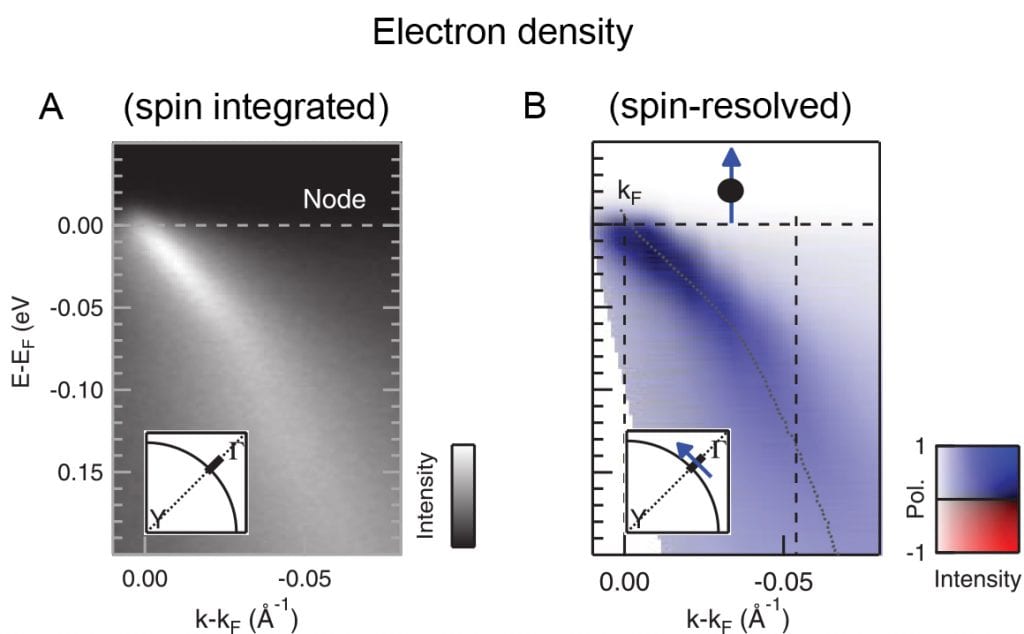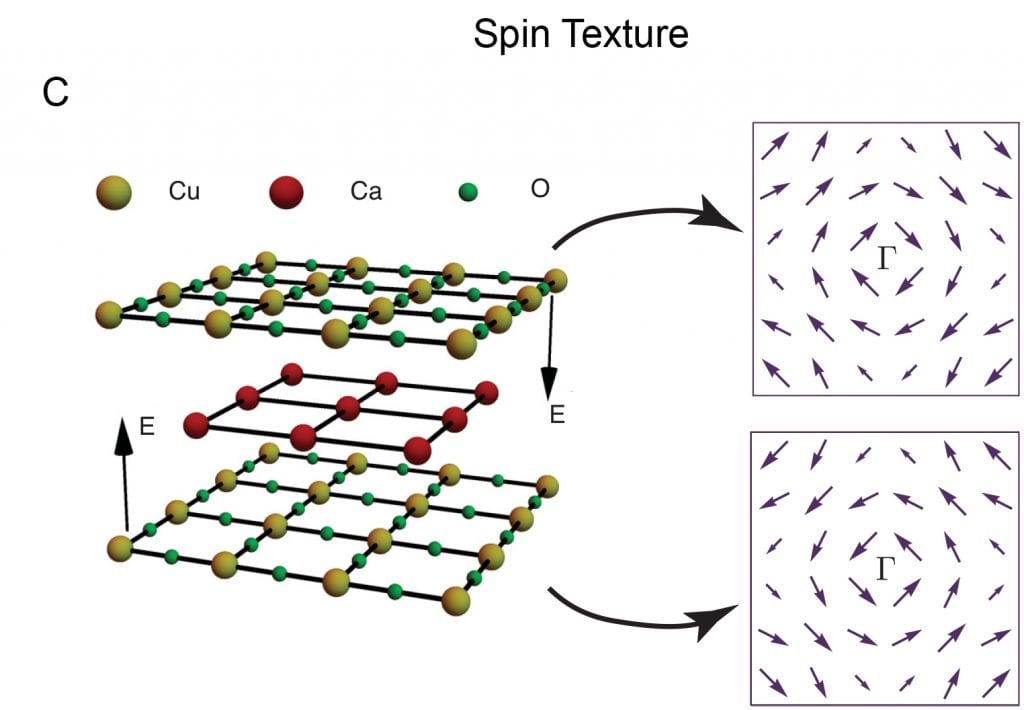San Jose State University Assistant Professor Christopher Smallwood’s latest research appears in Science on Dec. 14. A member of the College of Science Department of Physics and Astronomy, he worked with colleagues at the University of California, Berkeley and Lawrence Berkeley National Laboratory to study the electronic and magnetic properties of the cuprate high-temperature superconductor bismuth strontium calcium copper oxide (Bi2212) using the novel spectroscopic technique of spin- and angle-resolved photoemission spectroscopy (SARPES). Their article is entitled “Revealing hidden spin-momentum locking in a high-temperature cuprate superconductor.”
SARPES is a spin-sensitive variation of the more commonly implemented technique of angle-resolved photoemission spectroscopy (ARPES), which itself is an electron spectroscopy technique based on the photoelectric effect that makes it possible to observe the relationship between the energy and momentum of a material’s electrons [see panel (A) below]. As such, the technique enjoys the distinction of being among the most important modern experimental probes of material properties in existence, providing information on the role of a material as an electrical conductor or insulator, on the presence or absence of topological order, and (in this case) on the propensity of the material to exhibit superconductivity and magnetic order.
Their work is important as superconductivity is an exotic state of matter in which a material’s electrical resistivity drops perfectly to zero at low temperature. Due to the superior way in which electricity can flow in this state, materials exhibiting superconductivity have found their way into a number of applications including nuclear magnetic resonance (MRI) and the technology enabling high-energy particle accelerators. The phenomenon is also of great intrinsic scientific interest as the onset of superconductivity at anomalously high temperatures in copper-oxide-based and iron-based materials remains an unsolved question in condensed matter physics.
Experiments were performed by graduate students Kenneth Gotlieb and Chiu-Yun Lin under the leadership of Professor Alessandra Lanzara at Lawrence Berkeley National Laboratory and UC Berkeley. With the spin resolution enabled by SARPES, the study reveals and characterizes magnetic properties of Bi2212 that have gone unnoticed in previous studies [see panel (B), where the blue shading indicates spin polarization; and panel (C) which depicts a theoretically proposed spin texture], and which run counter to some of the prevailing theoretical ideas about the material’s electrical properties. In particular, the findings pose new challenges for the Hubbard model and its variants where the spin-orbit interaction is mostly neglected, and they raise the intriguing question of how cuprate superconductivity emerges in the presence of a nontrivial spin texture, as superconductivity and magnetism are normally considered to be competing forms of long-range electronic order.


